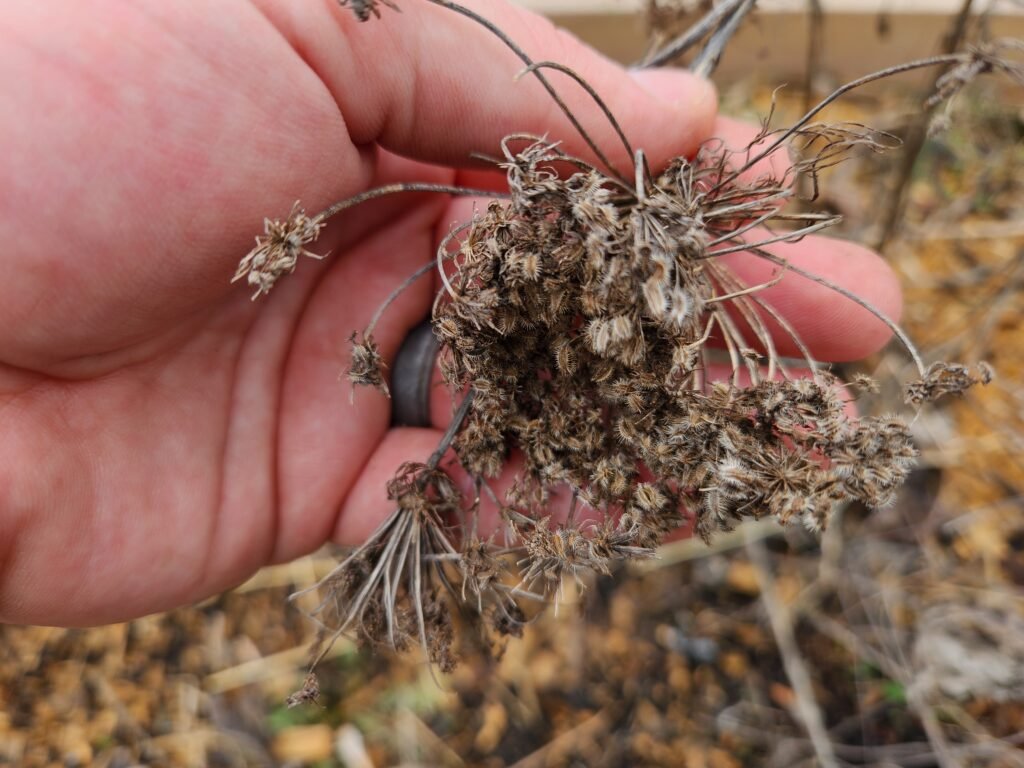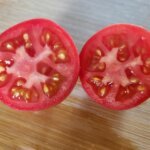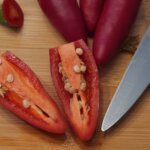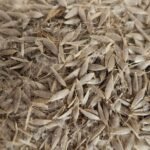Growing carrots in your garden is rewarding, but have you ever thought about saving their seeds for future planting? Carrots are biennial plants, and in their second year, they produce flowers where carrot seeds come from. Learning how to save carrot seeds is easy and rewarding.
This post contains affiliate links. If you use these links to buy something we may earn a commission. Thanks.
In this guide, we’ll walk you through the process of how to save carrot seeds, where carrot seeds come from, explain why it’s beneficial, and answer some of the most common questions about saving carrot seeds.
Why Save Carrot Seeds?
Saving your own carrot seeds comes with numerous benefits:
- Cost-Effective: By saving seeds, you reduce the need to purchase new seed packets each year, saving money over time.
- Adaptation to Your Environment: When you save seeds from plants grown in your garden, they gradually adapt to local soil conditions, weather patterns, and pests, making them more resilient.
- Preserving Heirloom Varieties: Many store-bought seeds come from hybrid plants that don’t breed true. By saving seeds from heirloom or open-pollinated carrots, you ensure the preservation of unique varieties.
- Self-Sufficiency: Growing your own seeds fosters a deeper connection to gardening and increases self-sustainability.
Where Do Carrot Seeds Come From?
Carrot seeds come from the flowers that form during the second year of growth of a carrot.
Understanding Carrots As A Biennial Crop
One important thing to know before saving carrot seeds is that carrots are biennial plants. This means they grow their leafy tops and edible roots in the first year, then flower and produce seeds in the second year. To collect viable seeds, you must allow your carrot plants to overwinter and enter their second growing season.
Step-by-Step Guide To Saving Carrot Seeds
Step 1. Choose The Right Carrot Variety
Only save seeds from open-pollinated (OP) or heirloom carrot varieties. Hybrid carrots will not produce seeds that are true to type, meaning their offspring may not resemble the original plant.
Once you’ve picked out your carrot variety that you’ll plant, grow your carrots as you normally would.
Step 2. Allow Carrots To Overwinter
- If you live in a mild climate, simply leave the strongest and healthiest carrot plants in the ground over winter.
- In colder climates, mulch heavily with straw or cover the plants with row covers to protect them from freezing. Learn about mulching from out mulching guide.
- Alternatively, dig up the best-looking carrots and store them in damp sand in a cool, dark place. Replant them in early spring once the soil is workable.
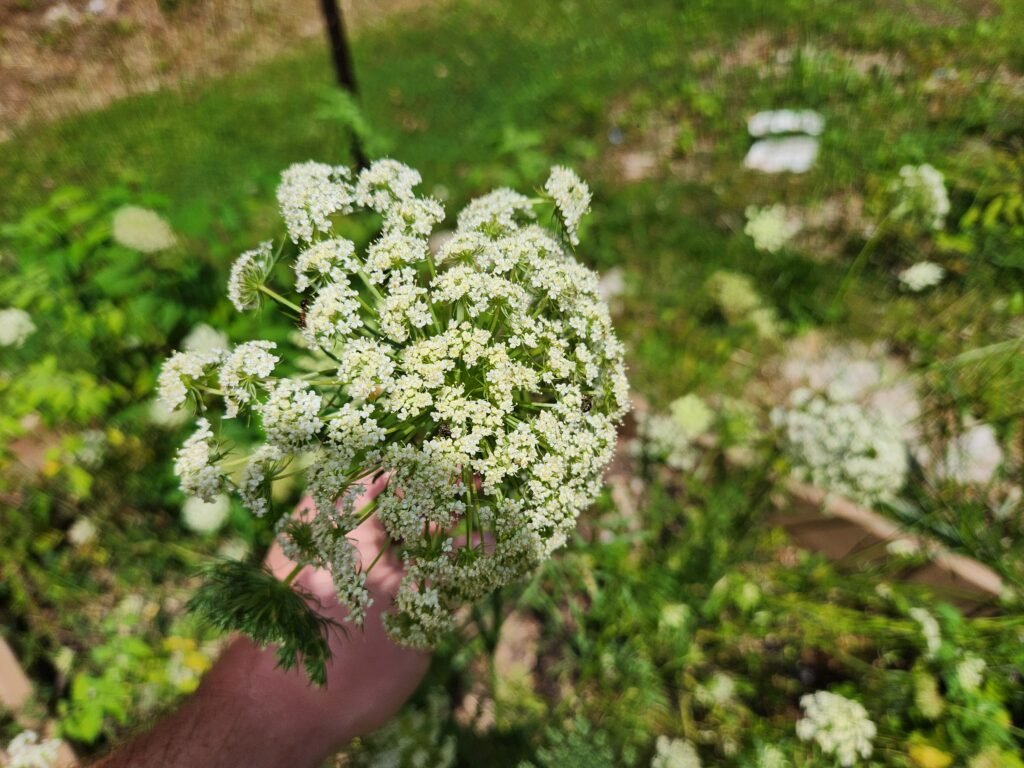
Step 3. Let The Carrot Plants Flower
In their second year, carrots will send up a tall stalk with umbrella-shaped flower clusters called umbels. These flowers attract pollinators like bees, making them beneficial to your entire garden.
Step 4. Watch For Seed Development
- After flowering, the plants will develop small, spiky seed heads.
- The seeds mature over several weeks and turn brown as they dry.
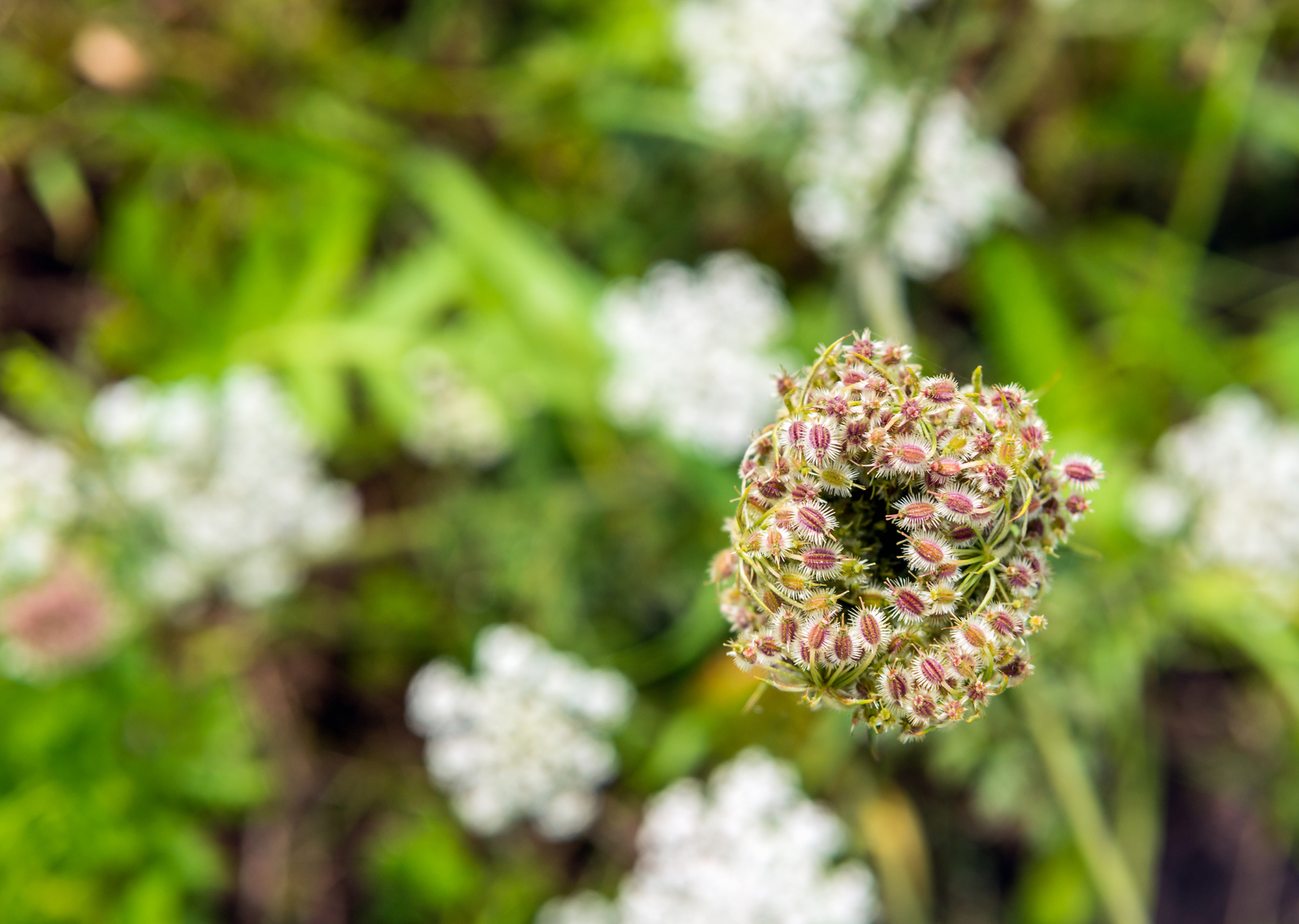
Step 5. Harvest The Carrot Seeds
- Once the seeds are fully dry and brown, cut the entire seed head off the plant.
- Place the seed heads in a paper bag or on a tray to continue drying in a cool, dry location for another 1-2 weeks.

Step 6. Separate And Store The Carrot Seeds
- Rub the seed heads gently to separate the seeds from the dried flower material.
- Use a sieve or mesh screen to remove any debris.
- Store the clean, dry seeds in an airtight container, such as a mason jar or sealed envelope.
- Label the container with the date and variety.
- Keep stored seeds in a cool, dark place; they will remain viable for up to three years.
Potential Challenges When Saving Carrot Seeds
Cross-Pollination
Carrots are pollinated by insects, meaning they can cross-pollinate with other carrot varieties or even with wild relatives like Queen Anne’s Lace. To prevent unwanted cross-pollination:
- Plant only one carrot variety for seed-saving.
- Isolate carrot plants from wild carrot relatives by at least 800 feet.
- Use physical barriers like row covers if necessary.
Overwintering Issues
- Carrots that rot or become soft over winter will not produce viable seeds. Choose the healthiest specimens for overwintering.
- If your area experiences harsh winters, consider digging up and storing your seed-saving carrots in a root cellar before replanting in spring.
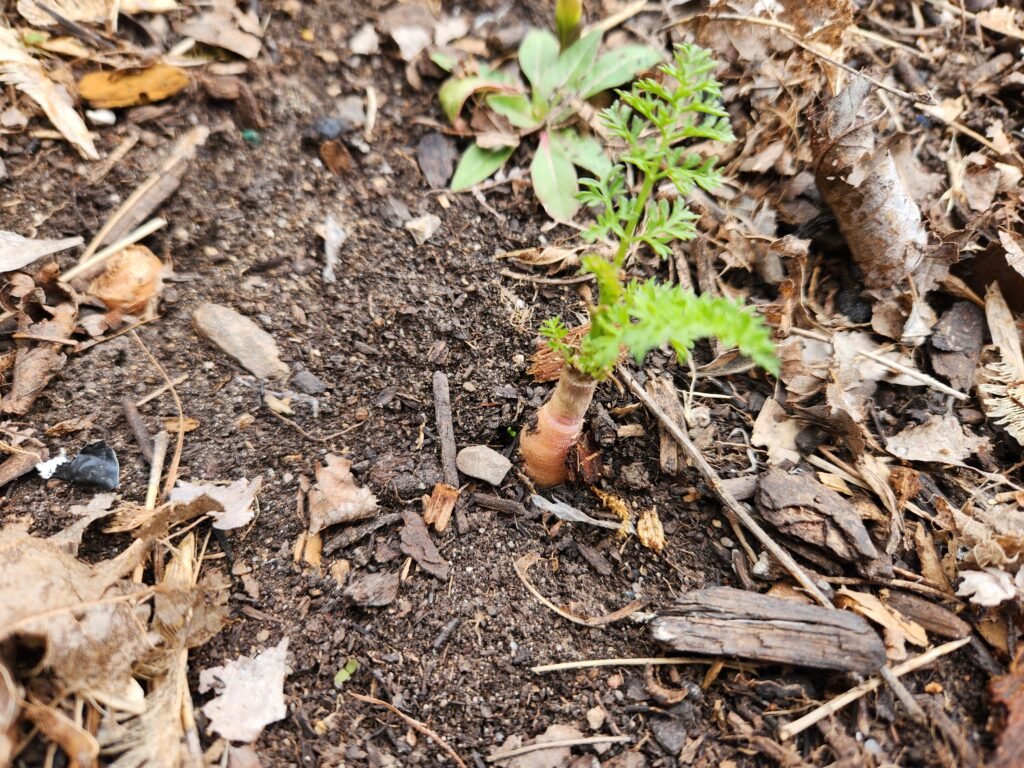
Frequently Asked Questions About Saving Carrot Seeds
No, most store-bought carrots come from hybrid varieties that do not produce true-to-type seeds. It’s best to grow open-pollinated or heirloom varieties specifically for seed-saving.
Carrot seeds can stay viable for up to three years if stored properly in a cool, dark, and dry place.
No, since carrots are biennials, they do not produce flowers or seeds until their second year of growth.
If different carrot varieties or wild relatives cross-pollinate, the resulting seeds may produce plants with unpredictable root shapes, colors, or flavors.
Carrot seeds are ready to harvest when they turn brown and very dry on the plant. Be sure to collect them before they fall naturally.
Conclusion
Saving carrot seeds is a rewarding and sustainable gardening practice that allows you to maintain a continuous supply of homegrown carrots suited to your local conditions. By selecting healthy, open-pollinated varieties, overwintering them properly, and taking precautions against cross-pollination, you can successfully harvest and store viable carrot seeds for future planting. Whether you’re a beginner or an experienced gardener, seed-saving is a valuable skill that promotes self-sufficiency and biodiversity in your garden. Start saving your carrot seeds this season and enjoy the long-term benefits for years to come!
We hope you enjoyed this seed saving guide. If you did make sure you check out the other growing guides, seed saving guides and our recipes. We are growing our website with more articles all the time, and we invite you to grow with us. Whether you’re a seasoned gardener or just starting out, saving carrot seeds can be an enriching experience. If you have any questions or want to share your seed saving journey, feel free to leave a comment below. Happy gardening!

